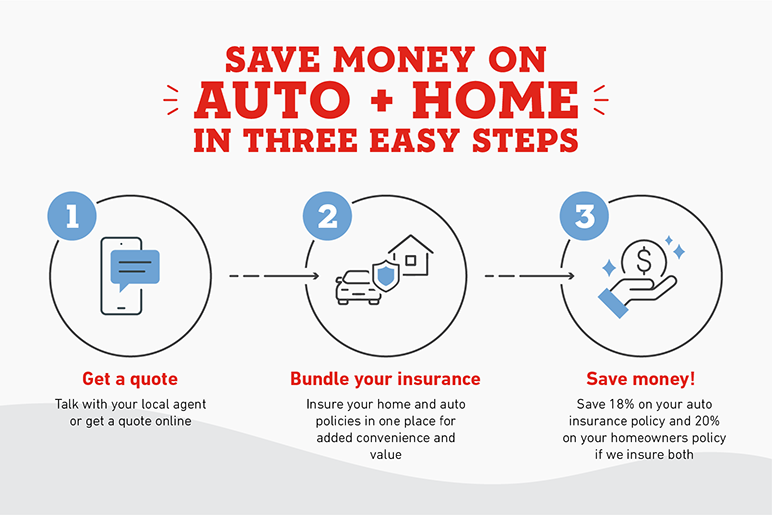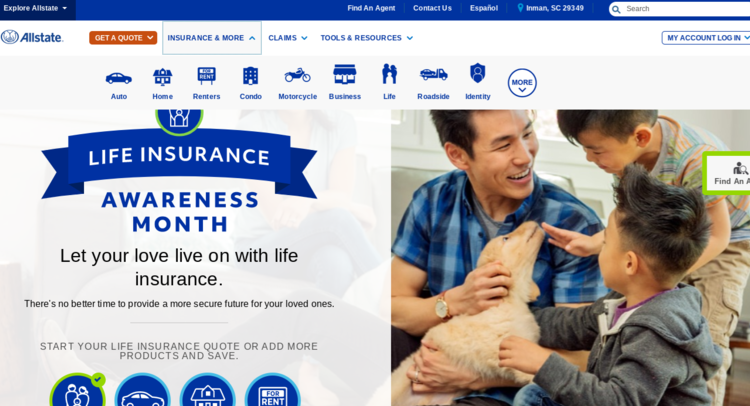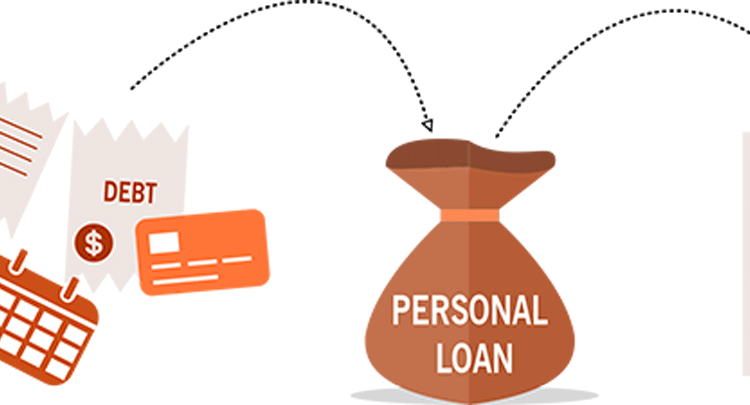The primary purpose of insurance is to protect individuals and their families from financial losses that may occur in case of an unexpected event. There are various types of insurance available, but two of the most common are auto and home owners insurance.
Toc
Auto insurance provides coverage for damages or injuries resulting from car accidents, while home owners insurance protects against damages to a person’s property or belongings. In this comprehensive guide, we will delve into the basics of both these types of insurance and provide helpful tips on how to choose the right coverage for your individual needs.
Introduction of auto and home owners insurance

In today’s world, protecting your valuable assets is more critical than ever. Whether it’s your car or your home, having the right insurance coverage can save you from significant financial strain. This guide covers the essentials of auto and home owners insurance, explaining why comprehensive coverage is necessary and how bundling policies can benefit you.
Why do we need auto and home owners insurance
Auto and home owners insurance are essential because they provide financial protection against the unexpected. For auto insurance, this means coverage for accidents, theft, and other vehicle-related incidents. With the rising number of vehicles on the road and the frequency of accidents, having auto insurance is not just a legal requirement in many places but also a safety net for your finances.
Home owners insurance, on the other hand, safeguards your house and personal belongings against risks such as fire, theft, natural disasters, and other potential hazards. Owning a home is one of the most significant investments you can make, and protecting it with proper insurance ensures that you don’t face devastating financial losses that could potentially displace you and your family.
In addition to protecting tangible assets, both auto and home owners insurance often come with liability coverage. This means if you are found legally responsible for causing injuries to others or damaging their property, your policy can help cover legal fees and settlements. Understanding these benefits and choosing the right coverage can provide peace of mind, knowing that you are prepared for life’s uncertainties.
The Benefits of Bundling Policies of auto and home owners insurance
Did you know that combining your home and auto insurance policies can lead to significant savings? Many insurance providers offer discounts to customers who bundle their policies, potentially saving you up to 20% annually. Bundling not only makes financial sense but also simplifies your insurance process, reducing the hassle of managing multiple accounts. Additionally, bundling policies can provide you with better coverage options and help you save time by having all your insurance needs addressed in one place.
Auto Insurance

Auto insurance is a crucial type of coverage for anyone who owns a vehicle. It protects you from financial liability if you are involved in an accident or your car gets damaged or stolen. While most states require drivers to have auto insurance, it’s essential to understand the different types of coverage available and choose the right one for your specific needs.
Types of Auto Coverage
- Liability Coverage: This type of coverage is mandatory in most states and covers damages or injuries caused by you to others while driving your vehicle.
- Collision Coverage: This coverage helps pay for repairs or replacement of your car if it’s damaged in a collision with another vehicle or object.
- Comprehensive Coverage: Comprehensive coverage provides protection against damages to your car from non-collision incidents such as theft, vandalism, and natural disasters.
- Personal Injury Protection (PIP): PIP covers medical expenses for you and your passengers regardless of who is at fault in an accident.
Auto Insurance Coverage
- Liability Coverage: Covers damages to others if you’re at fault in an accident.
- Comprehensive Coverage: Protects against non-collision-related incidents like theft, fire, and natural disasters.
- Collision Coverage: Pays for damages to your vehicle in case of an accident.
- Uninsured/Underinsured Motorist Coverage: Offers protection if you’re involved in an accident with a driver who lacks sufficient insurance.
Tips for Choosing Auto Insurance
- Assess your needs: Analyze your driving habits, the value of your car and other factors to determine the level of coverage you require.
- Shop around: Compare quotes from different insurance providers to find the best coverage at an affordable price.
- Consider deductibles: Choosing a higher deductible can lower your premium, but make sure you can afford to pay it if needed.
- Look for discounts: Many insurance companies offer discounts for factors such as good driving records, safety features in your car, and bundling policies.
- Read the fine print: Make sure you understand what is covered and excluded in your policy to avoid any surprises in case of a claim.
Home Owners Insurance

Having a solid home owners insurance policy is crucial for protecting your most significant investment – your home. It provides financial coverage for damages to your house and belongings, liability protection, and peace of mind knowing that you are prepared for any unforeseen events.
Types of Home Owners Coverage
- Dwelling Coverage: This covers the cost of repairing or rebuilding your home if it’s damaged by a covered peril such as fire, theft, or natural disaster.
- Personal Property Coverage: Protects your personal belongings inside your home against damage or loss from covered perils.
- Liability Coverage: Offers financial protection in case someone gets injured while on your property or if you cause damage to someone else’s property.
- Additional Living Expenses: If your home becomes uninhabitable due to a covered peril, this coverage can help pay for temporary living expenses.
Home Insurance Coverage
- Dwelling Coverage: Pays for damages to the physical structure of your home.
- Personal Property Coverage: Protects personal belongings inside your home such as furniture, electronics, and clothing.
- Liability Coverage: Provides financial protection if you’re responsible for injuries or property damage to others.
- Additional Living Expenses: Helps cover costs if you are temporarily unable to live in your home due to a covered event.
Tips for Choosing Home Owners Insurance
- Evaluate your home’s value: Make sure you have enough coverage to rebuild your home in case of a total loss.
- Understand what’s covered and excluded: Read through the policy carefully to know what is included and excluded from your coverage.
- Consider additional coverage options: Depending on where you live, you may need extra coverage for hazards such as earthquakes or floods.
- Shop around: Get quotes from different insurance providers to find the best coverage at an affordable price.
- Bundle policies: Bundling your home owners insurance with other policies can lead to significant savings and simplify the insurance process.
The Claim Process

Filing an insurance claim can be a daunting process, but understanding the steps involved can make it much smoother and less stressful. Here is a general outline of the claim process for both auto and home owners insurance:
Steps to File a Claim
- Report the Incident: As soon as an incident occurs, whether it’s a car accident or property damage to your home, you should report it to your insurance provider. Most companies have a 24/7 claims hotline or an online claim submission option to initiate the process promptly.
- Document the Damage: Gather evidence of the damage through photographs and written descriptions. For auto claims, this may include pictures of the vehicle damage and police reports. For home claims, document any structural damage, damaged personal property, and any temporary repairs you have made to prevent further damage.
- Fill Out a Claim Form: Your insurance company will provide a claim form that will need to be filled out with details about the incident and the extent of the damage. Make sure to provide accurate and thorough information to avoid any delays in processing your claim.
- Schedule an Adjuster Visit: An insurance adjuster may be sent to assess the damage in person. They will evaluate the cost of repairs and determine the validity of your claim. Be prepared to answer questions and provide additional documentation if required.
- Review the Settlement Offer: Once the adjuster has completed their evaluation, the insurance company will provide you with a settlement offer. Review this offer carefully and ensure it adequately covers the damage incurred. If you have any concerns or believe the offer is too low, you have the right to negotiate or seek a second opinion.
- Receive Payment: After you agree to the settlement terms, the insurance company will issue payment for the claim. This may be done through a cheque or direct deposit. Ensure you understand how the funds can be used, especially if portions are earmarked for specific repairs or replacements.
- Complete Repairs: Use the claims payment to make necessary repairs or replacements. Keep receipts and documentation of all work done, as the insurance company may require proof that the funds were used appropriately.
Tips for a Smooth Claim Process
- Keep Detailed Records: Maintain thorough records of all communication with your insurance provider, including emails, letters, and phone call logs.
- Understand Your Policy: Be familiar with your policy’s coverage limits, exclusions, and any deductibles that apply.
- Act Quickly: Promptly report any incidents and provide all requested information to your insurer to avoid delays.
- Seek Professional Advice: If the claim process becomes overwhelming or if you encounter disputes, consider consulting a public adjuster or legal professional.
- Review and Update Policies: Regularly review your insurance policies to ensure they provide adequate coverage for your current needs and make updates as necessary.
By following these steps and tips, you can navigate the claim process more efficiently and secure the financial protection you need during challenging times.
Choosing the best Providers for auto and home owners insurance

Choosing the best providers for auto and home owners insurance involves researching different companies and evaluating their offerings to find the one that best meets your needs. Here are key factors to consider when selecting an insurance provider:
Factors to Consider When Choosing an Insurance Provider
- Reputation and Reliability: Look for insurance companies with good reputations and high customer satisfaction ratings. Check reviews, ratings from independent agencies, and customer feedback to gauge their reliability.
- Financial Stability: Ensure the provider is financially stable and capable of paying out claims. You can check their financial ratings through agencies like A.M. Best, Moody’s, or Standard & Poor’s.
- Coverage Options: Evaluate the range of coverage options offered. A good provider should offer comprehensive and customizable policies that can be tailored to your specific needs, including any additional coverages unique to your circumstances.
- Claims Process: A straightforward and efficient claims process is crucial. Consider how easy it is to file a claim, the steps involved, and the average time for claims to be processed and paid. Check for customer reviews that specifically mention their claims experience.
- Premiums and Deductibles: Compare the cost of premiums and deductibles between providers. Remember that the cheapest option may not always be the best; aim for a balance between cost and coverage.
- Discounts: Look for providers that offer discounts for things like bundling auto and home insurance, having a secure home, or maintaining a good driving record. These discounts can significantly reduce your overall insurance costs.
- Customer Service: Assess the quality of customer service provided. Responsive and helpful customer service can make a big difference, especially when you need assistance or have questions regarding your policy.
Top Insurance Providers to Consider
Here are some top-rated insurance providers known for their comprehensive coverage, strong financial standing, and excellent customer service:
- State Farm: Known for its extensive network of agents and excellent customer service, State Farm offers a wide range of auto and home insurance products with customizable options and discounts for bundling policies.
- Allstate: Offers robust coverage options and various discounts. Allstate is also highly rated for its claims process and customer support.
- GEICO: Renowned for competitive pricing, GEICO provides straightforward policies with significant online resources and customer service support.
- Progressive: Features innovative tools like the Name Your Price tool to help tailor policies to your budget. Progressive also offers various discounts for safe driving and multiple policy bundling.
- USAA: Exclusively serving military families, USAA is highly rated for both auto and home insurance, offering competitive rates and exceptional customer service.
By carefully considering these factors and researching potential providers, you can make an informed decision that ensures you are adequately protected without paying more than necessary.
Conclusion

Choosing the right auto and home owners insurance provider can offer peace of mind and significant financial protection. It is essential to thoroughly research and compare your options, considering all aspects outlined above, to ensure you make the best choice for your specific needs. Remember, insurance policies are not one-size-fits-all; what works for someone else may not necessarily work best for you.
Furthermore, it’s crucial to regularly review and update your insurance policies to adapt to life changes. Significant events like purchasing a new car, moving to a new home, renovations, or even changes in your financial situation can impact your insurance needs. Staying proactive about your coverage helps maintain the appropriate levels of protection.
In summary, the process of choosing and maintaining the best providers for auto and home insurance involves ongoing research, vigilance, and periodic adjustments. By staying informed and proactive, you can navigate the insurance landscape effectively, ensuring your assets and loved ones are well-protected.










